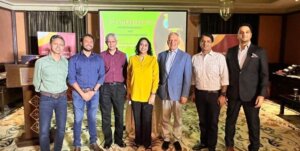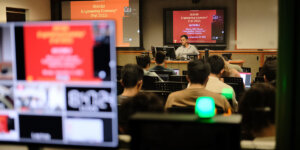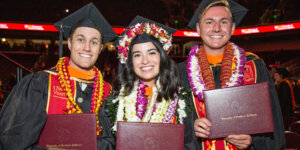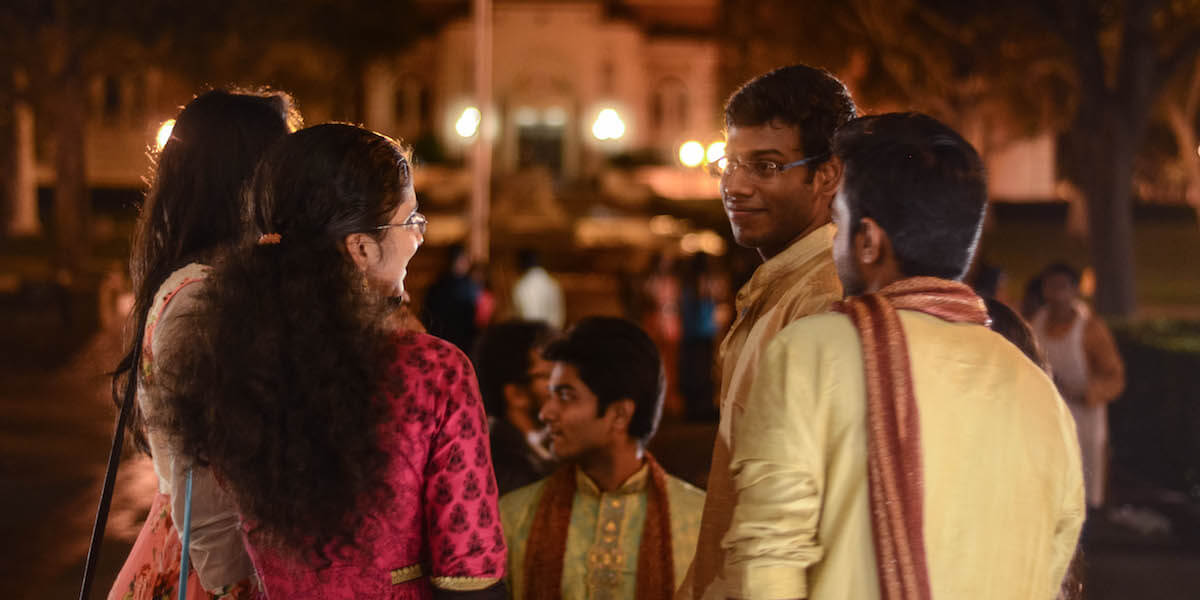
Students gather outside Bovard Auditorium to celebrate Diwali. Photo by Peter Shin
A string of students and lights lined the entrance to Bovard Auditorium on Sunday, October 30, overflowing the hall to maximum capacity in celebration of Diwali, the Indian festival of lights celebrated by millions of people across the world every autumn. The festival coincides with the Hindu new year, and light represents self-actualization and new beginnings.
Hosted by USC’s Association of Indian Students (AIS), Bovard’s Diwali celebration spanned for over three hours and had over 1200 students in attendance. The celebration featured classical and Bollywood music performances as well as improv skits and dance routines.
Although Diwali has an overarching message of good and light driving out darkness and evil, the 2016 celebration felt far more closer to home than a holiday thousands of years old. The plethora of languages spoken throughout India were represented in rap battles and classical vocal performances, and students from across the world found themselves singing along to solo song medleys.
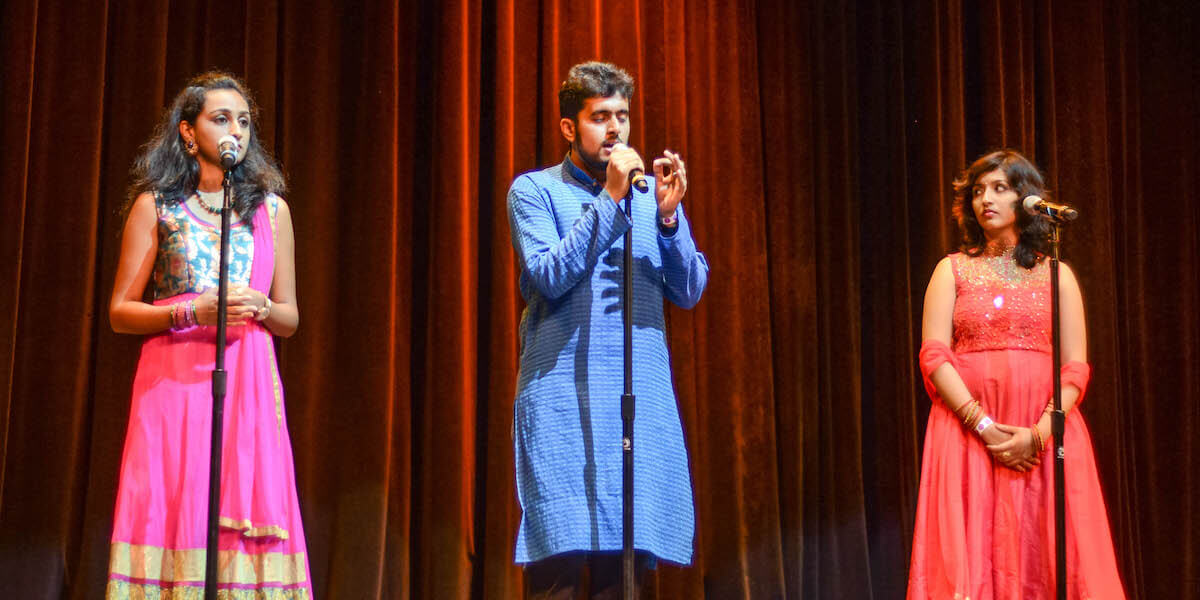
The celebration included live musical performances by students. Photo by Peter Shin
“Diwali has a special significance to Indians as a whole,” said Sagar Mittal, a USC Viterbi senior majoring in computer science. “To me personally, Diwali is a time for family, friends and celebration.”
As of Fall 2016, USC is home to 2,153 Indian students, the majority of whom call the USC Viterbi School of Engineering home. The AIS-organized celebration not only fostered a home-away-from-home sentiment for it’s many South Asian students but welcomed students, faculty and staff from all cultures to enjoy what has become over the years a Trojan family experience.
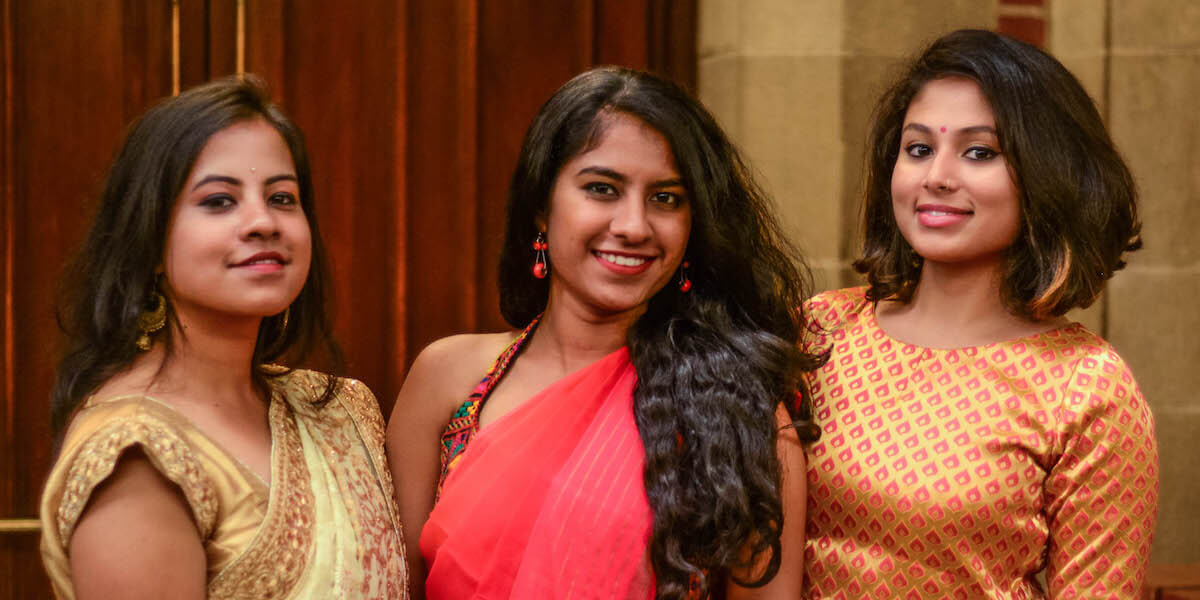
Students pose in colorful traditional dresses at the Diwali festival. Photo by Peter Shin
“In engineering schools, in education in general, Diwali has the symbolism of the power of knowledge and truth over ignorance and darkness,” said USC Viterbi Dean Yannis Yortsos in his address to the student body in commemoration of Diwali.
“USC is blessed with a number of very strong partnerships with our Indian constituencies and friends. Whether they are in our engineering school or in India or everywhere in the world, we are blessed to have their friendship and support, and we share with them this wonderful holiday.”
India has over 25 languages and dozens of cultural groups, but here are 11 traditional Diwali greetings, depending on where they’re from:
In Hindi (India’s national language): “Diwali ki Shubhkamnayein! / Shubh Deepavali”
In Punjabi: “Tuhanu Diwali diyan boht boht vadhaiyan”
In Marathi: “Shubh Diwali! Diwalichya hardik Shubhechha”
In Tamil: “Deepavali”
In Telugu: “Deepavali Shubhakankshalu”
In Malayalam: “Deepavali Aashamsagal”
In Kannada: “Deepavali Habbada Shubhashayagalu”
In Bengali: “Subho Deepabalir Preeti O Subechsha”
In Oriya: “Deepavalira Anek Shubhechha”
In Gujarati: “Divali Mubarak”
In English: “Happy Diwali!”
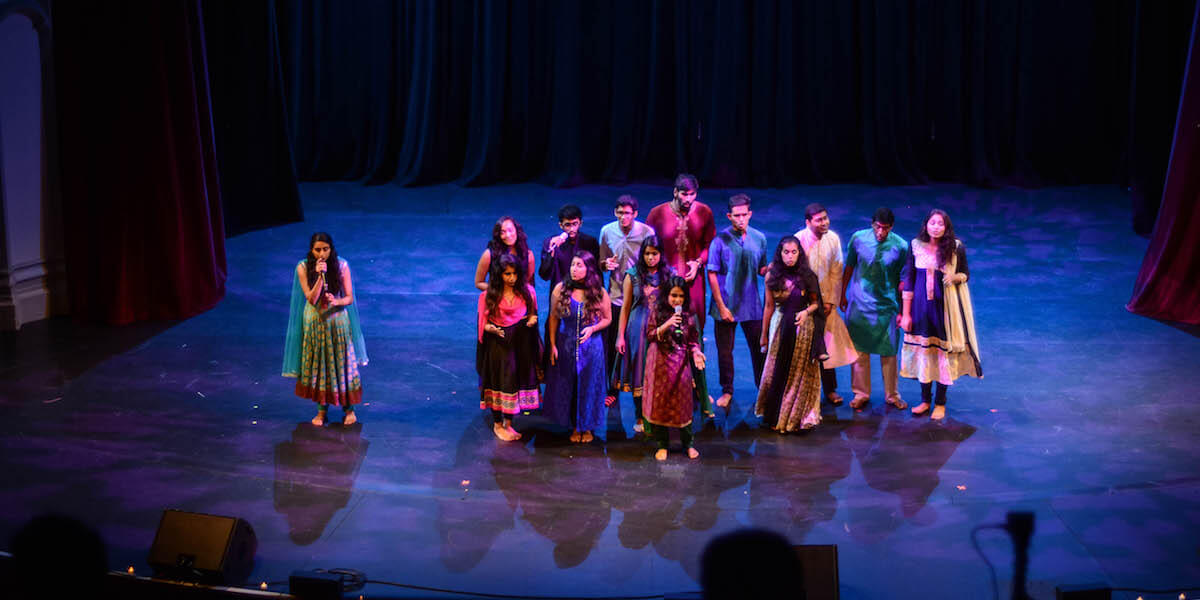
Performers kept more than one thousand in the audience entertained throughout the night. Photo/Peter Shin
Published on November 15th, 2016
Last updated on March 10th, 2017




